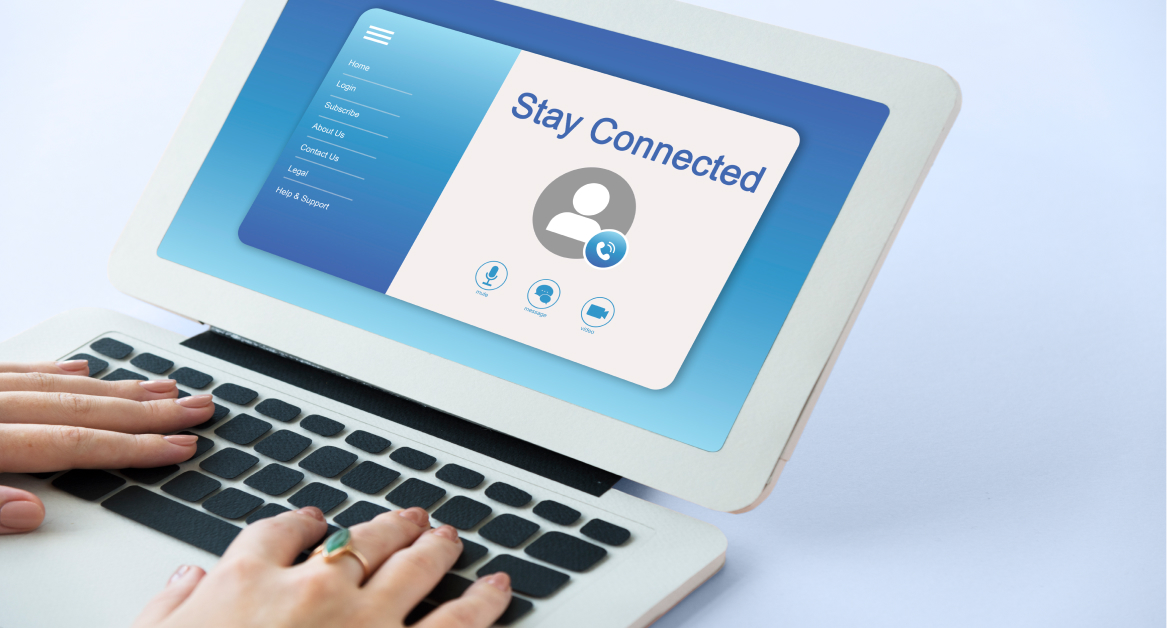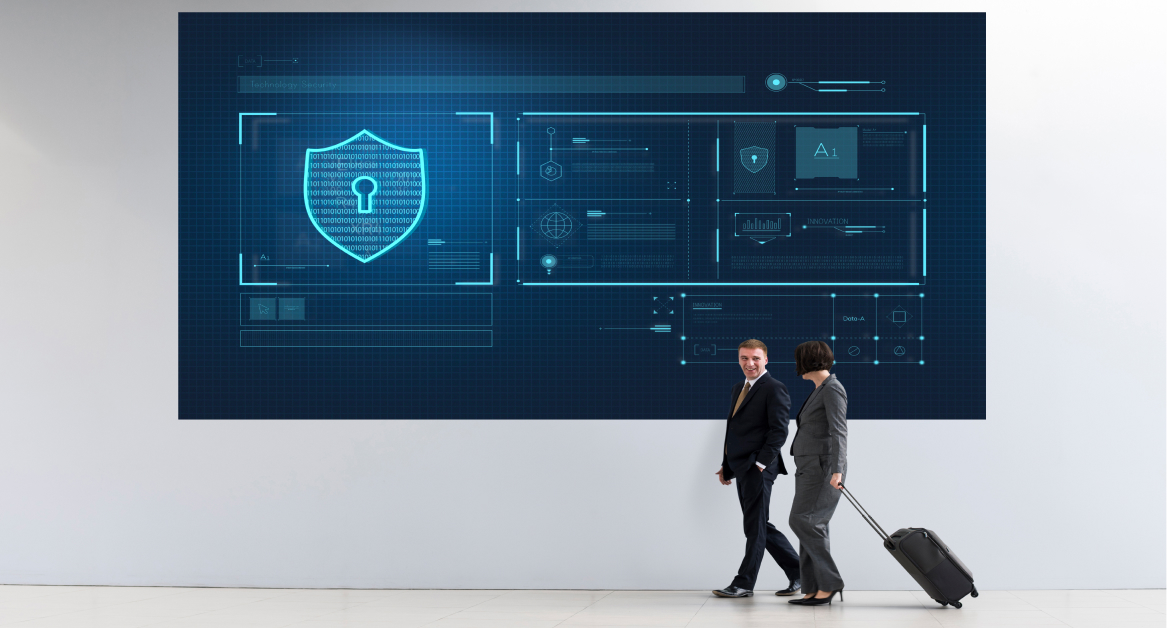October marks cybersecurity awareness month—a global initiative to educate individuals and organizations on the importance of online safety. In 2025, the theme continues to echo the idea of “Secure Our World,” highlighting that everyone plays a role in defending digital environments.
Cyber threats are evolving fast. Phishing, ransomware, identity theft—they’re no longer limited to large corporations. Startups and remote teams are now prime targets. That’s why raising awareness and instilling smart security behaviors isn’t optional—it’s essential.
Whether you’re a startup founder, CIO, or team lead, these ideas will help you educate your workforce, boost engagement, and build lasting habits that keep your business safe.
Let’s dive in! ✨
Preparing for cybersecurity awareness month 2025
Running a successful cybersecurity awareness month campaign starts with good planning. Here’s how to lay the groundwork for a meaningful and impactful October.
Set clear goals for your campaign
Before designing any activity, define what success looks like. Are you trying to:
- Reduce phishing click-through rates?
- Encourage adoption of strong passwords?
- Increase enrollment in cybersecurity awareness training programs?
- Boost understanding of identity theft risks?
Clear goals help shape the structure and tone of your campaign. They also give you benchmarks to measure against.
Identify your target audience
Not all employees have the same risk profile. Your marketing team may be more exposed on social media, while your finance team handles sensitive payment information daily. Tailoring awareness training to each group’s risks makes the experience more relevant and effective.
Ask yourself:
- What kind of cyber threats are each department most vulnerable to?
- What security behaviors do we need to reinforce for each role?
Plan a mix of activities
One-size-fits-all doesn’t work for awareness campaigns. Some people learn through hands-on experiences. Others prefer stories or short videos. Mix up your content with:
- Gamified challenges
- Real-life breach case studies
- Security quizzes and simulations
- Internal webinars and expert talks
- Printable resources for remote teams
Creating a varied learning experience ensures you engage everyone—not just the tech-savvy few.
Secure leadership buy-in
Cybersecurity awareness month should feel like a company-wide initiative—not just something “IT is doing.” When leadership participates, it signals that security is a shared priority.
Encourage executives to:
- Join awareness training sessions
- Share personal anecdotes about security slip-ups
- Post supportive messages on Slack or internal forums
This kind of social proof goes a long way toward building an open and proactive security culture.
Communicate early and often
Start teasing your awareness month activities by late September. Use email, Slack, company newsletters, or internal wikis to build curiosity. A simple countdown, teaser videos, or even sneak peeks of prizes for participation can help generate momentum.
Think about using recurring themes or hashtags like:
- #StaySafeOctober
- #CyberAware2025
- #SecureOurWorld
These little touches give your campaign a cohesive identity and make it easier to track engagement across platforms.
Measure and adapt
What gets measured gets improved. During the month, track participation in events, quiz scores, and platform logins for cybersecurity awareness training. Afterward, review what worked and what didn’t.
Ask for feedback:
- Which activity did employees enjoy the most?
- Was there a moment that really stuck with them?
- What can be improved for next year?
11 creative cybersecurity awareness activities

1. Phishing simulation challenges
Nothing teaches like experience. Set up a phishing simulation where employees receive mock phishing emails to test their instincts. After each simulation, provide immediate feedback explaining why the message was suspicious.
It’s a powerful way to raise awareness and build pattern recognition. Over time, employees become more cautious and confident when handling real threats – a crucial practice for digital-first teams, including SEO Reseller agencies that manage multiple client accounts and sensitive marketing data.
2. Cyber trivia showdown
Host a weekly cybersecurity trivia session using tools like Kahoot or Slido. Cover topics like password safety, social media best practices, and how to recognize scams.
To boost participation:
- Offer small prizes (gift cards, extra day off)
- Form teams by department or region
- Keep it fast-paced and lighthearted
Learning becomes much more memorable when it’s fun.
3. Cybersecurity meme contest
Encourage your team to create memes about cyber threats, strong passwords, or staying secure online. Share the best ones in internal newsletters or Slack channels. Humor can break down the “this is boring IT stuff” mindset and make the content more relatable.
4. Security behaviors bingo
Create a custom bingo card with smart security behaviors as the squares:
- Update a password using a passphrase
- Spot a suspicious link
- Enable two-factor authentication
- Complete awareness training
Employees mark off actions as they go. Offer prizes for full rows or blackout cards. It’s a simple way to turn education into daily habits.
5. Guest speaker webinar
Invite a cybersecurity expert—or even someone who experienced identity theft—to speak about the real-world impact of cyber threats. Stories humanize the topic. They remind people why their actions matter.
Pro tip: Ask your speaker to keep things practical and interactive. Focus on takeaways employees can use immediately.
6. Password strength workshop
Weak passwords are still one of the biggest security risks. Run a session showing employees how to create strong passwords using passphrases, password managers, and two-factor authentication.
Include live demos and real-life password-cracking examples. You’ll be surprised how many employees change their behavior right away after seeing how fast bad passwords get hacked.
7. Social media privacy review
Social media awareness month overlaps with cybersecurity awareness month, making October the perfect time to discuss social sharing risks.
Host a “clean up your feed” session where employees:
- Review their privacy settings
- Remove personal data from public profiles
- Learn how to spot fake accounts or phishing messages
8. Departmental cyber threat drill
Simulate a security breach scenario tailored to each department. For example:
- Finance team receives a fraudulent invoice
- Marketing gets a fake password reset request from a hacked tool
- HR receives an email spoofing the CEO requesting personal employee data
Run the drill, then debrief. What worked? What didn’t? How fast did the team respond?
These drills help teams build muscle memory for real-life situations.
9. Security tip of the day series
Every workday in October, post one quick security tip. Keep it bite-sized:
- “Lock your screen when stepping away”
- “Watch out for URLs with misspelled domains”
- “Don’t use the same password for multiple tools”
You can post these via email, Slack, or your internal wiki. Repetition helps embed good habits.
10. Interactive awareness training modules
If you’re using cybersecurity awareness training programs, make sure they’re more than just checkbox exercises. Choose platforms that offer gamification, real-world scenarios, and adaptive content based on the user’s performance.
Esevel, for example, can help implement awareness training that fits your team’s risk profile and supports ongoing education—not just during October.
11. Cybersecurity awareness wall of fame
Recognize employees who show great security habits during the month. Highlight:
- The first person to report a phishing simulation
- Someone who spotted a real security issue
- The most improved quiz score
FAQs about cybersecurity awareness month
1. What is cybersecurity awareness month?
Cybersecurity awareness month is a global initiative observed every October. It’s designed to raise awareness about digital threats and promote safe online behaviors at work and at home.
It was launched in 2004 by the National Cyber Security Alliance (NCSA) and the U.S. Department of Homeland Security. Since then, it has grown into an international campaign supported by governments, businesses, and nonprofits.
2. Why does our company need to participate?
Cybersecurity isn’t just an IT issue—it’s a business risk. A single employee clicking the wrong link can lead to major financial and reputational damage.
Participating in cybersecurity awareness month helps you:
- Educate individuals and organizations about common threats
- Reinforce good security habits like using strong passwords
- Build a proactive security culture across departments
- Reduce the risk of incidents caused by human error
Plus, it’s a great opportunity to spotlight your IT or security team’s hard work and initiatives.
3. Is this only for large companies?
Not at all. In fact, small and mid-sized businesses are often more vulnerable to cyber threats because they lack robust protection or regular training.
That’s why awareness training isn’t optional—it’s essential. Whether you’re a 10-person startup or a growing hybrid team, you have digital assets worth protecting.
4. What’s the theme for 2025?
While official themes may vary slightly by region, the continuing global focus is around “Secure Our World.” The message is simple: cybersecurity is everyone’s job. Whether you’re sharing files, creating passwords, or browsing on your phone—you play a part.
Expect messaging around:
- Personal responsibility
- Data privacy
- Protecting hybrid work environments
- Cybersecurity awareness training programs
5. How long should our campaign last?
You can customize it to fit your bandwidth. Some companies run a full month of activities, while others focus on one impactful week.
The key is consistency. Don’t just drop one email and call it done. Instead:
- Use weekly themes
- Layer in different learning experiences
- Keep the message visible across internal channels
5. What tools or platforms can help?
There are plenty of helpful tools to support your cybersecurity awareness month campaign, such as:
- Esevel: Centralized IT platform offering device security management, awareness training setup, and real-time IT support
- KnowBe4 / Hoxhunt: Platforms for phishing simulations and behavior tracking
- Kahoot / Slido: Tools for trivia and quizzes
- Loom / Zoom: Great for hosting live or recorded webinars and guest talks
Choose tools that your team already uses and feels comfortable with to reduce friction.
Turn awareness into action
Cybersecurity awareness month is your chance to do more than just inform—it’s your moment to inspire.
When teams understand the “why” behind security habits, they make better choices. They pause before clicking suspicious links. They lock their screens. They report the weird stuff.
That’s how real change happens—not with fear, but with awareness, ownership, and a little creativity.







